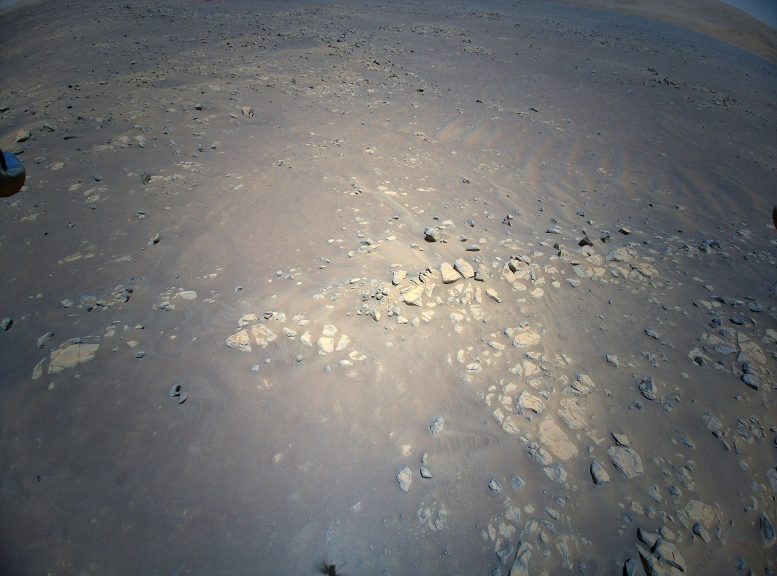This 3D view of geologic feature the Mars Perseverance rover team calls “Raised Ridges” was generated from data collected by Ingenuity during its 10th flight at Mars, on July 24, 2021. Credit: NASA/JPL-Caltech
A member of the Perseverance rover’s science team explains why the aerial image offers science advantages over ground-level images.
Ask any space explorer, and they’ll have a favorite photo or two from their mission. For Kevin Hand, a scientist at
The Return to Earth camera on NASA’s Ingenuity Mars Helicopter snapped this picture of geologic feature the Mars Perseverance rover team calls “Raised Ridges” during its 10th flight at Mars, on July 24, 2021. Credit: NASA/JPL-Caltech
The Raised Ridges intrigue Hand and his colleagues because they consist of three distinct surface fractures that converge at a central point. On Earth, similar fractures in desert environments might be a clue to past liquid water activity and thus past habitability. The Perseverance science team wants to know if what is good for the third rock from the Sun is good for Mars – and if so, whether the Raised Ridges tell them something significant about Mars’ watery past.
“If you look closely, you can see some curious lines across the surfaces of several rocks.” — Perseverance science team member Kevin Hand
“In 3D it almost feels like you can reach out and touch the Raised Ridges,” said Hand. “But along with its immersive beauty, the image provides great detail. If you look closely, you can see some curious lines across the surfaces of several rocks. Are these just made by eons of wind and dust blowing over the rocks, or might those features tell the story of water? We just don’t know yet.”
Those details are important. In their search for signs of ancient life on Mars, the team is considering drilling a rock or sediment sample in the Raised Ridges, which would take several Martian days, or sols, of driving to reach. With Ingenuity’s images, the rover team now has a much better idea of what to expect if they were to go there and the science value of doing so. In the weeks to come, the science team will pour over this and other 3D images from Ingenuity and debate the merits of such a visit.
“Since landing at Jezero Crater, it’s clear to all of us that there is an abundance of geologic riches for us to explore. It’s a good problem to have,” said Ken Williford, deputy project scientist for Perseverance at (function(d, s, id){
var js, fjs = d.getElementsByTagName(s)[0];
if (d.getElementById(id)) return;
js = d.createElement(s); js.id = id;
js.src = "https://connect.facebook.net/en_US/sdk.js#xfbml=1&version=v2.6";
fjs.parentNode.insertBefore(js, fjs);
}(document, 'script', 'facebook-jssdk'));
Read original article here
